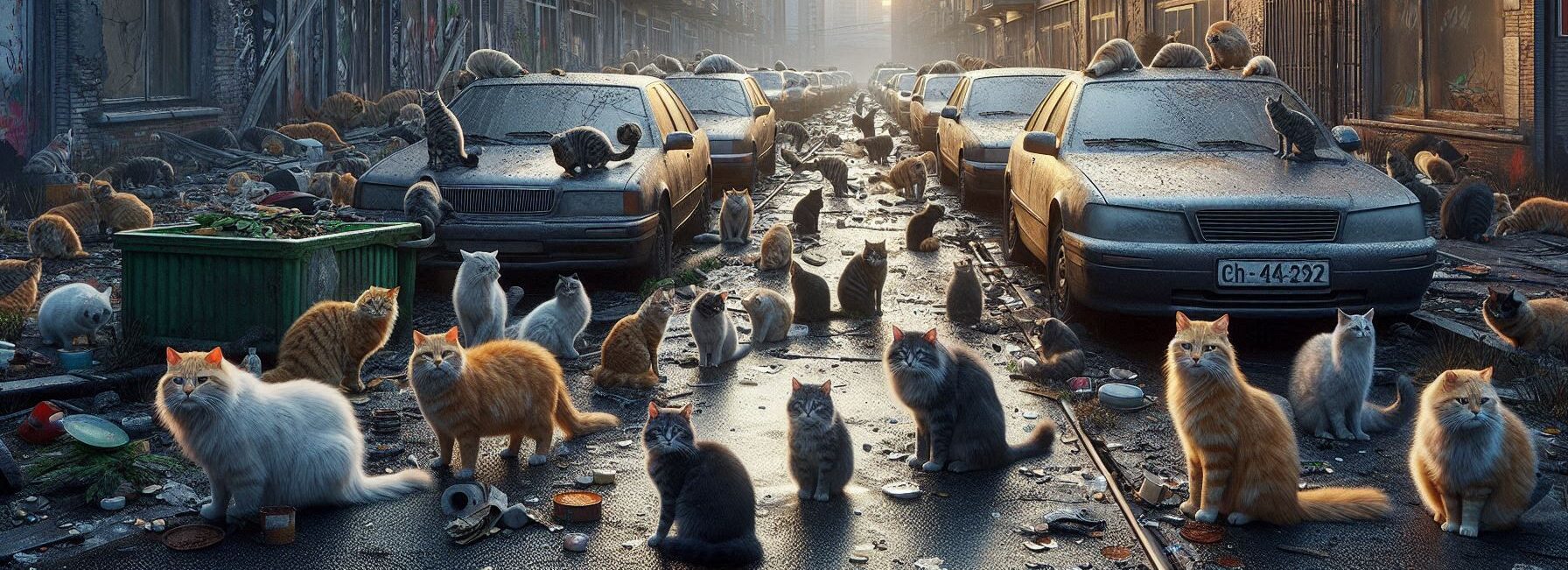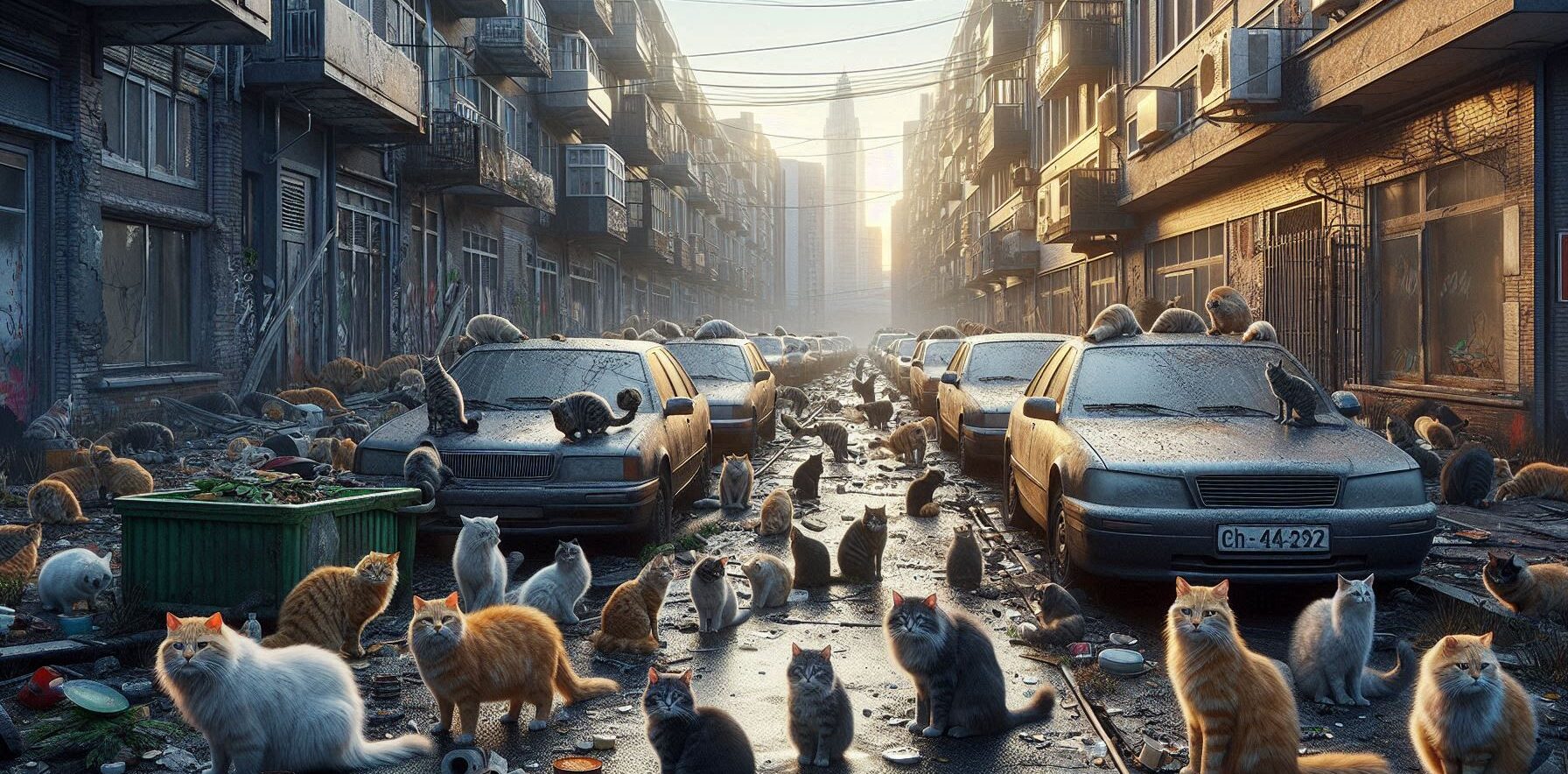As I sip my morning coffee while watching the neighborhood cats frolic in the sun, I can’t help but feel a mix of affection and concern.
Those furry little creatures are captivating, with their playful antics and mysterious ways. But have you ever stopped to think about what happens when those adorable furballs form colonies?
Yes, feral cats can be cute, but they also raise some serious environmental issues that we need to discuss.
Understanding Feral Cat Colonies

By the way, let’s clarify what we mean by “feral cats.” These are not your typical lap kitties who purr at your feet while you binge-watch reality TV.
No, these are the independent spirits who roam our streets and parks—often unsocialized and living off scraps or hunting small wildlife. It’s estimated that there are millions of feral cats in the U.S. alone! So why should we care?
Interestingly enough, feral cat colonies can significantly impact local ecosystems. When left unchecked, they become skilled hunters, preying on birds, small mammals, reptiles, and even insects.
Now imagine a thriving bird population suddenly vanishing because Fluffy decided it was time for a snack. This isn’t just sad; it disrupts entire food chains and diminishes biodiversity in our communities.
Let’s see: while many folks might argue that cats control rodent populations (and they do!), this doesn’t mean they’re harmless.
In fact, studies show that outdoor cats kill billions of birds each year! That’s a staggering number—almost enough to make you want to start an anti-cat campaign (but let’s hold off on that for now).
The Health Risks Posed by Feral Cats
Now let’s add the last piece to the feline triplet, as it were: the problem of health risks linked with the feral cat lifestyle. To be honest, as adorable as these kitties may appear from a distance, they, in most cases, carry a range of infections including but not limited to, toxoplasmosis or feline leukemia virus (FeLV).
This isn’t only bad news for the cats themselves; it has the potential to be a threat to other animals, and even humans!
Toxoplasmosis is particularly bad since it is a parasite that is present in cat feces. If you are planning on gardening or allowing your children to play outside where these ferals reside — well — you may think twice!
Exposure can elicit flu-like symptoms in healthy people, but may inflict adverse effects on pregnant women as well as immunocompromised patients.
Also, think of how these colonies affect the resources of the community. They most times depend on a steady supply of food given by well-meaning residents who do not understand the cause and effects of uncontrolled feeding of feral cats with no dynamic measures put in place.
This does not solve the main cause of the problem – the overpopulation issue, but rather encourages it.
Solutions: Management of Wild Cats
There is really no point in wishing that members of wild cat communities simply disappear; people need to start taking action instead, otherwise these members will remain on the highways and city streets forever.
One popular approach is Trap-Neuter-Return, or TNR (the name gives it all away). TNR is a way in which managed relocation of feral cats is done. In TNR a target cat, who is placed in a particular location and has been identified, is humanely trapped.
Later the cat is taken to a nearby veterinarian facility where it is either neutered or spayed in order to remove chances of future reproduction. Finally the now neutered or spayed cat is released back to its location
To be honest, TNR has proved effective is reducing the size of cat colonies over time without the need to resort to the inhumane practice of euthanasia, a major selling point in today’s society.
Who wants to go through the excruciating sight of hundreds of cats waiting for adoptees only to not get adopted and put through the horrors of unreasonable mating, kittens born out and more importantly, a lack of homes for the kittens?
Instead, imagine a world where you are aware that we are all attempting to tackle the excessive matter in a common sense way supported by a non-violent method of TNR! End of heart breaking animation.
Here’s what you should try to understand: after participating in TNR programs and being inoculated against common feline diseases, these wild cats are less hostile towards local animal population and as a result are more cooperative. Doesn’t it sound amazing.
Community Engagement: A Future Approach
Considering everything, this problem of wild cat overpopulation and increased colonies cannot be tackled without a signing formation – It takes a country….or at least a province Imagine the possibilities.
TNR efforts are often assisted by local organizations with the help of volunteers and local kres who work wing together to help manage the situation.
If you care for changing circumstances in your locality, why not consider joining in? Start discussions with people around you to establish proper pet ownership culture, or engage directly with animal NGOs existing in your region with the aim to establish networks restraining stray proliferation.
And, in this context, I must emphasize the fact that education is also an important factor! Informing the public on proper breeding feeding goes hand in hand with educating on the importance of spaying/neutering pets before the pets are allowed outside, as prevention of the problems is always more effective than curing them!
Finally, and I warn you this is not an aimless rant I came up with around my cat and her pillow, the fact remains that cat colonies have some sort of environmental consequences, and that particular issue needs to be dealt with if we want to come up with reasonable and practical strategies in the future.
Suggested Resources:
The Impact of Feral Cats on Wildlife
https://www.audubon.org/news/the-impact-feral-cats-wildlife
Trap-Neuter-Return Programs
https://www.alleycat.org/resources/trap-neuter-return/
Feral Cat Management Strategies
https://www.humanesociety.org/resources/feral-cat-management-strategies

